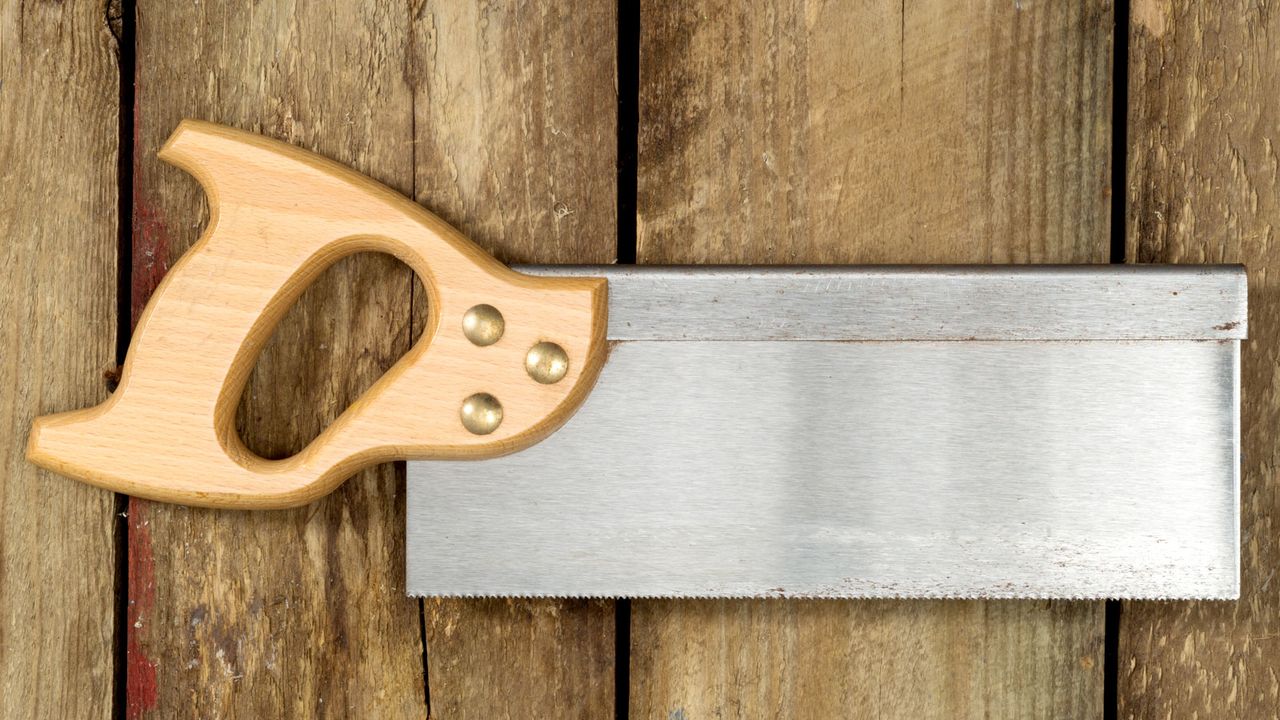
Tenon Saws: Uses, Differences, and FAQs

A tenon saw is a valuable addition to any DIY enthusiast’s toolbox, particularly for those involved in woodworking. While not an everyday tool for all projects, its specialised capabilities make it indispensable for specific tasks requiring precision and finesse. Let’s delve into the world of tenon saws and explore their uses, features, and how they compare to other types of saws.
What is a Tenon Saw Used For?
The tenon saw is primarily employed for achieving clean, accurate cuts in woodworking. Its name originates from its traditional use in creating mortise and tenon joints, a fundamental element in furniture making and joinery.
As Scott Godfrey, a carpenter and small business owner explains, “A tenon saw is mainly used for making precise, straight cuts in wood, particularly for joinery work. As the name suggests, it’s ideal for cutting tenons – the projecting pieces of wood that fit into mortices.”
Beyond tenon creation, this saw is also well-suited for tasks demanding accuracy, such as trimming mouldings or precisely sizing smaller pieces of wood. The rigid spine of the tenon saw is key to its accuracy, providing stability and control during cuts.
Understanding the Tenon Saw: A Type of Back Saw
The tenon saw belongs to the backsaw family, characterised by a reinforcing spine along the top edge of the blade. This spine, traditionally made of brass, gives the saw its distinctive appearance and contributes to its functionality. While brass is common, the spine can also be made of steel or, less frequently, wood.
Tenon saws typically feature a relatively short blade, ranging from approximately 250mm to 300mm in length and a depth of around 75mm to 100mm. However, oversized versions with greater depths are also available.
The spine limits the cutting depth, as the saw cannot cut beyond the point where the spine meets the wood. Despite this limitation, a tenon saw, in conjunction with a mitre block, is excellent for tasks like cutting skirting boards to achieve neat and precise angles.
Materials Suitable for a Tenon Saw
Primarily designed for precision cutting, the tenon saw is almost exclusively used on wood.
Godfrey clarifies, “It’s designed for cutting wood, usually softwood and hardwood. You wouldn’t use it on metal or plastic – it’s really a woodworking tool. It’s not suited for rough cutting or anything where speed matters more than accuracy.”
The Role of the Spine: Rigidity and Accuracy
The spine, whether made of brass, steel, or wood, serves a crucial purpose: to provide rigidity and stiffness to the saw blade. This prevents the blade from flexing during use, ensuring straight and accurate cuts. This is particularly important when creating furniture or other projects where precision is paramount. The added weight of the spine also aids in the cutting motion.
Tenon Saw vs. Dovetail Saw: Key Differences
Both tenon saws and dovetail saws are members of the backsaw family. They share a similar appearance and both feature a spine to enhance cutting accuracy. However, there are key distinctions between the two.
The tenon saw is generally larger than the dovetail saw, with a wider and thicker blade. It typically has fewer teeth per inch (TPI) compared to a dovetail saw. The teeth on a tenon saw are typically crosscut, designed for cutting across the grain of the wood.
Conversely, the dovetail saw is specifically designed for cutting dovetail joints, which are typically smaller than tenon joints. As such, it has a shorter and thinner blade. Dovetail saws also feature a higher TPI and rip teeth, optimised for cutting along the grain.
Teeth Per Inch (TPI): Achieving the Desired Finish
The number of teeth per inch (TPI) on a saw blade directly impacts the fineness of the cut and the resulting finish. A higher TPI generally produces a smoother, neater cut.
Tenon saws typically have between 10 and 14 TPI, with 12 or 13 being a common choice. Godfrey notes, “14 TPI is great for detailed work, while 10 TPI will cut faster but with a rougher finish. What you choose depends on the job, but for joinery, finer teeth tend to give a neater result.”
In comparison, dovetail saws often have a higher TPI, ranging from 15 to 20. Standard handsaws, designed for general-purpose cutting, typically have a lower TPI of 8 to 10.
Essential Tools for Using a Tenon Saw
To maximise the effectiveness and accuracy of a tenon saw, consider using the following tools:
- Irwin Jack Tenon Saw: A hardpoint tenon saw with 12 TPI and triple-ground technology for optimized cutting performance. Features a soft-grip handle for comfort and a secure hold.
- Draper Mini Mitre Block: Ideal for securing and cutting wood at 45 and 90-degree angles. Countersunk holes allow for secure attachment to a workbench, ensuring stability and accuracy.
- Irwin Quick-Grip Mini Clamp Set: These 150mm clamps feature non-marring pads, perfect for attaching wood to a workbench without damaging the surface. A one-handed quick-release trigger allows for easy removal.
Conclusion
The tenon saw is a specialised tool that offers unparalleled precision and control for woodworking tasks. Understanding its features, uses, and how it compares to other saws will help you determine if it’s a valuable addition to your toolkit. Whether you’re crafting intricate joints or simply need to make accurate cuts, the tenon saw is a reliable and versatile tool for achieving professional-quality results.






